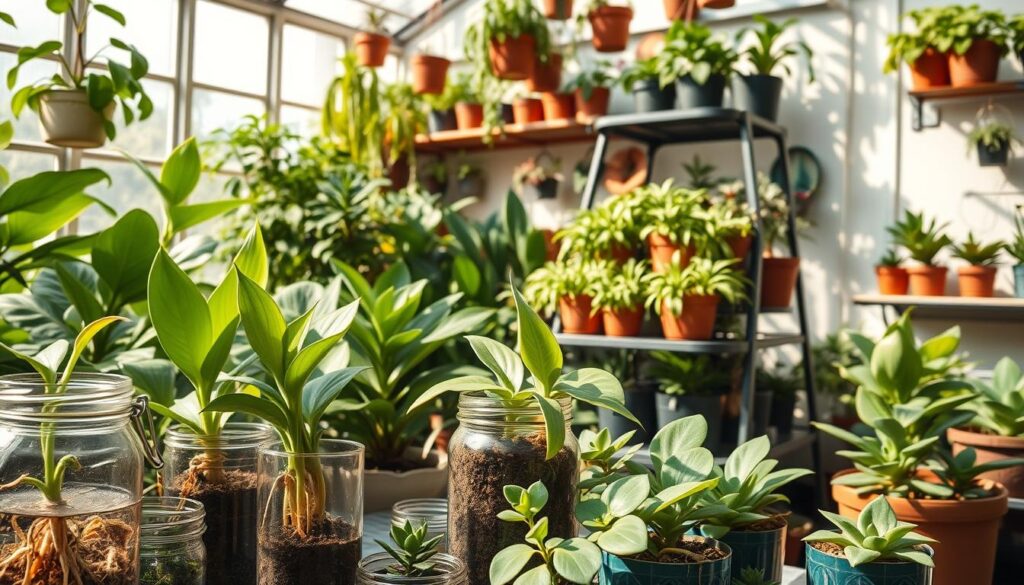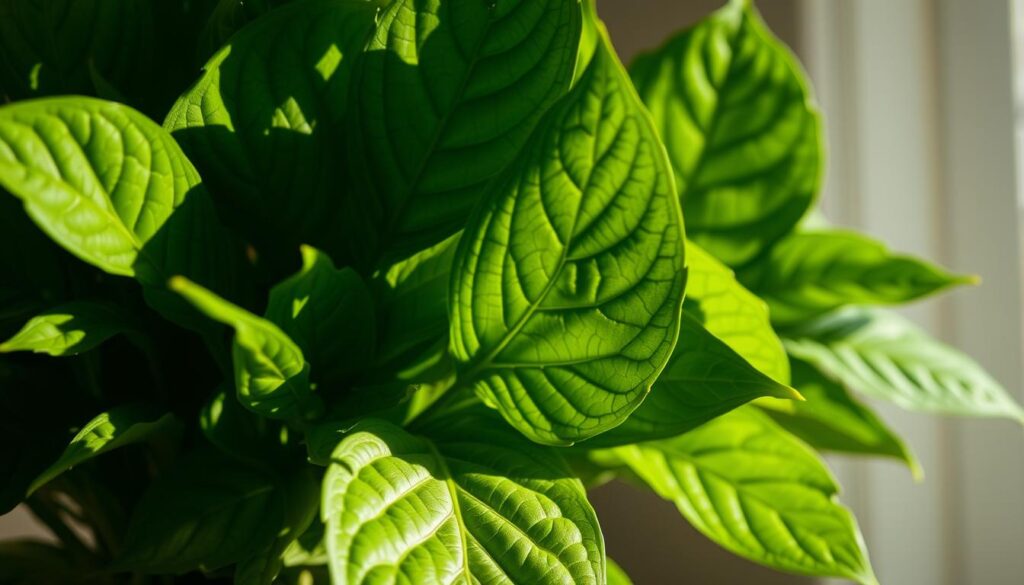Imagine walking into a room filled with lush, thriving plants that bring life and freshness to your space. For many of us, this is now a reality. According to a survey by civicscience.com, 66% of U.S. consumers now own at least one houseplant. This growing trend has sparked a wave of creativity in plant care, with enthusiasts sharing their tips and tricks online.
At the heart of this movement is Birds & Blooms, a trusted resource that has collected varied tips from real houseplant parents. Plant parents like Roslyn Francis and Lisa Sherman have shared their experiences, offering insights that range from watering techniques to clever hacks for optimal growth. These tips are not just creative; they’re also scientifically backed, ensuring your plants get the best care possible.
Watering is one of the most critical aspects of plant care. Overwatering can be harmful, so it’s essential to find the right balance. The soil should be moist but not soggy, and the frequency of watering will depend on the type of plant you have. For example, some plants prefer their soil to dry out completely between waterings, while others need consistent moisture.
Lighting is another crucial factor. Most plants need bright, indirect light to photosynthesize effectively. Placing them near a sunny window or using grow lights can help them thrive. However, direct sunlight can sometimes be too intense and may cause the leaves to become scorched.
Rotation is also important to ensure even growth. Plants naturally grow towards their light source, so rotating them regularly will help them maintain a balanced shape. This simple hack can make a big difference in the appearance of your plants.
By following these tips, you can create a thriving indoor garden that brings joy and freshness to your home. Stay tuned for more detailed guides on topics like advanced watering techniques and specialized care for specific plant types.
Practical Watering Techniques for Indoor Plants
Watering your plants can be both an art and a science. Finding the right balance is crucial for their health. Here are some practical tips to ensure your plants get just the right amount of moisture.
Using Ice Cubes for Slow, Even Watering
Imagine placing an ice cube on the soil of your plant. As it melts, it releases water slowly and evenly. This method is especially useful for hanging plants, where soil can dry out quickly. Roslyn Francis, an avid plant parent, swears by this technique. “It’s perfect for busy schedules,” she says. “I just add a few ice cubes, and my plants stay hydrated all day.”
Lisa Sherman, another plant enthusiast, agrees. “I was amazed at how well it worked for my ferns. The ice cubes prevent overwatering and ensure the soil stays moist without getting soggy.”
Repurposing Cooking Water for Extra Nutrients
Did you know your kitchen can provide a nutrient-rich treat for your plants? Water from boiling vegetables or eggs is packed with minerals. Let it cool, then pour it over the soil. This eco-friendly method skips harsh chemicals found in commercial fertilizers.
Here’s how to do it:
- Let the water cool completely to avoid burning the roots.
- Use it on plants that benefit from extra nutrients, like herbs or flowering plants.
This simple hack not only nourishes your plants but also reduces kitchen waste. It’s a win-win for your garden and the environment.
Houseplant Hacks You Need to Know for Optimal Growth
Optimizing your plant care routine can make a significant difference in the health and vitality of your plants. By incorporating simple yet effective hacks, you can prevent common issues like overwatering and nutrient deficiencies, ensuring your plants thrive all year round.
Investing in a Moisture Meter to Prevent Overwatering
A moisture meter is a game-changer for plant care. It helps you accurately measure soil moisture, preventing overwatering which can lead to root rot. Tracy McCullum, an experienced plant parent, swears by her moisture meter. “It’s saved my plants from so much stress,” she says. “Now, I water with confidence!”
Enhancing Soil with Coffee Grounds and Eggshells
Adding coffee grounds and crushed eggshells to your soil can boost its fertility. Coffee grounds are rich in nitrogen, while eggshells provide calcium, promoting healthy root development. Dolores Koland, a gardening enthusiast, noticed a visible improvement. “My plants have never looked greener!” she exclaims.
Applying the 10-10-10 Fertilizer Rule Efficiently
A balanced 10-10-10 fertilizer provides essential nutrients for plant growth. Use it monthly during the growing season but reduce application in winter. This ensures your plants receive consistent nourishment without over-fertilizing.
| Hack | Benefits | Application |
|---|---|---|
| Moisture Meter | Prevents overwatering, reduces root stress | Check soil moisture before watering |
| Coffee Grounds | Boosts nitrogen levels, improves drainage | Mix 1/4 cup into top soil monthly |
| Eggshells | Provides calcium, prevents root burn | Crush 2-3 shells, mix into soil |
| 10-10-10 Fertilizer | Balanced nutrients for growth | Apply once a month, less in winter |
By integrating these hacks, you can create a nurturing environment for your plants. Start with one method and gradually add more, monitoring your plants’ responses. These sustainable practices are cost-effective and eco-friendly, ensuring your garden thrives while reducing waste.

Creative Plant Placement and Lighting Solutions
Transforming your space into a lush oasis involves more than just watering and feeding your plants. Creative placement and smart lighting can elevate your plant care game, ensuring each plant thrives in its ideal environment.
Maximizing Sunlight with Strategic Furniture Placement
Hope Cate’s innovative approach is a perfect example. She uses a long sofa table placed in front of a south-facing window to create both sunlit and shaded areas. This setup allows her to cater to both sun-loving and shade-tolerant plants. For instance, she places ferns and peace lilies in the bright spots and reserves the shadier areas for plants like Chinese Evergreen. This method ensures all plants receive the right amount of light, promoting healthy growth and vibrant foliage.
Using Artificial Grow Lights Effectively
On cloudy days or in rooms with limited natural light, artificial grow lights can be a lifesaver. Place grow lights 6-12 inches above your plants to provide the right intensity without causing stress. For example, snake plants and spider plants benefit greatly from this setup. To maintain consistency, use timers to simulate natural daylight cycles, ensuring your plants receive 12-14 hours of light daily. This balance of natural and artificial light creates an optimal environment for your plants to flourish.
https://www.youtube.com/watch?v=NJtC2imiAIg&pp=ygUNI2RpeWZyYW1lbGVhZg%3D%3D
Smart Techniques for Rotation and Humidity Control
Keeping your plants healthy involves more than just watering and feeding. Proper rotation and humidity control are essential for their optimal growth and vitality.
Rotating Plants for Even Sun Exposure
Plants naturally lean toward light sources, which can cause uneven growth. To prevent this, rotate your plants weekly. A simple quarter-turn each week ensures balanced growth and a fuller appearance. Judy Roberts, a gardening expert, suggests this method for consistent results.
Boosting Humidity with Simple Home Methods
Tropical plants thrive in humid environments. To create this at home, place pots on a gravel tray with water. As water evaporates, it increases humidity around the plants. Maintain humidity levels around 50% for optimal conditions.
| Technique | Benefits | Application |
|---|---|---|
| Weekly Rotation | Promotes balanced growth | Rotate plants 1/4 turn each week |
| Gravel Tray | Increases humidity | Place pot on gravel over water |
Regular checks and seasonal adjustments ensure your plants adapt well. This approach keeps your indoor garden thriving and pest-free. Consistency is key to maintaining healthy, vibrant plants.

Bringing It All Together for a Thriving Indoor Garden
Creating a vibrant indoor garden is all about combining smart techniques with consistent care. From watering methods to creative placement, every detail matters for your plants’ health. Remember, it’s the little things—like checking each leaf and root—that make a big difference.
Start by mixing simple hacks, like using ice cubes for slow watering, with more innovative ideas, such as repurposing cooking water for extra nutrients. Don’t forget to rotate your plants weekly and use gravel trays to boost humidity, especially for tropical species. These small steps add up to create a thriving environment.
As the seasons change, adjust your care routine. In winter, reduce watering and fertilizer use, but keep an eye on humidity levels. Every new plant deserves attention, so make sure to monitor their needs closely. The key to success? Consistent effort and a keen eye for detail.
Now it’s your turn! Try these hacks today and watch your plants flourish. With a little creativity and care, your indoor garden will be the envy of every visitor. Happy planting!
